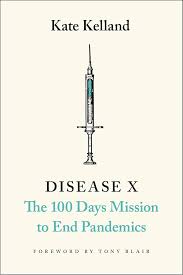Disease X: The Potential Future Pandemic

Introduction
Disease X is a term coined by the World Health Organization (WHO) to refer to a hypothetical infectious disease that could cause a global pandemic. It serves as a reminder of the ever-present risk of emerging pathogens, highlighting the importance of global health preparedness. As recent events, such as the COVID-19 pandemic, have demonstrated, new diseases can arise unexpectedly, emphasising the need for resilience in our health systems and a proactive approach to disease prevention.
Current Context of Disease X
In light of the ongoing concerns around emerging diseases, the WHO and health experts are closely monitoring various pathogens that could potentially develop into Disease X. One significant factor is climate change, which is altering ecosystems and potentially allowing diseases to emerge in new regions. For instance, vector-borne diseases like Zika or West Nile virus have seen expansion into new geographic areas, often attributed to changing climate conditions.
Moreover, advancements in technology and genetic engineering raise concerns about the intentional or unintentional release of pathogens. This evolution in biotechnology could lead to a scenario where an existing pathogen adapts to become more virulent or transmissible.
Preparedness and Response Measures
Global health authorities, including the WHO, are advocating for enhanced surveillance systems to detect and respond to potential health threats. This includes the development of rapid response teams and stockpiling of essential medical supplies like vaccines and antiviral medications. Vaccination campaigns against known diseases also contribute to societal resilience against future pandemics.
Countries are being urged to invest in healthcare infrastructure and research to better understand zoonotic diseases—those that can be transmitted from animals to humans. Collaborative research initiatives that cross international borders are crucial for sharing information on potential threats and coordinating responses effectively.
Conclusion
Disease X remains an abstract concept for many, but it underscores a significant reality: the world must be prepared for the possibility of a new infectious disease emerging at any time. Public health experts predict that as global travel increases and urban populations grow, the risk of new pathogens arising will only heighten. By prioritising health preparedness, engaging in international cooperation, and fostering public awareness, society can better safeguard against the unknown threats that lie ahead.
In conclusion, while Disease X may be an unknown entity today, its implications warrant immediate attention. Through a multifaceted approach that encompasses research, healthcare preparedness, and public health policy, we can mitigate the risks associated with emerging infectious diseases.









